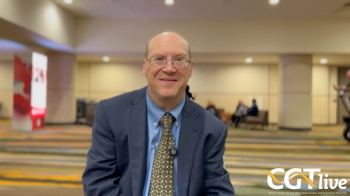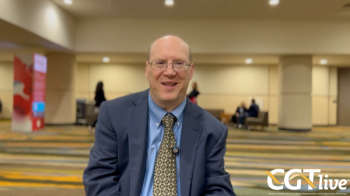
EGFR Mutation Not a Prognostic Factor for NSCLC
Although the presence of an EGFR mutation is a predictive marker for response to EGFR tyrosine kinase inhibitor therapy in patients with non-small cell lung cancer, the mutation is not a prognostic factor.
Young Tae Kim, MD
Although the presence of an epidermal growth factor receptor (EGFR) mutation is a predictive marker for response to EGFR tyrosine kinase inhibitor (TKI) therapy in patients with non-small cell lung cancer (NSCLC), the mutation is not a prognostic factor, according to a study in the Journal of Thoracic Oncology.
Previous studies that sought to determine the utility of EGFR as a prognostic factor in NSCLC have had mixed results, possibly due to confounding factors such as clinical characteristics and the small sizes of the study populations. In this study, the authors investigated EGFR as a prognostic marker in patients who underwent complete resection for NSCLC.
In the study conducted at Seoul National University Hospital, investigators retrospectively collected samples from patients with NSCLC, 636 with adenocarcinoma and 227 with squamous cell carcinoma. Of those patients, 354 had an EGFR mutation. The patients had been seen at the hospital between June 1998 and February 2010, and all had undergone surgery for their disease.
EGFR mutations were frequently seen in adenocarcinoma in younger women who had never smoked and had early-stage disease. A univariate analysis of those patients found that bronchioloalveolar carcinoma pattern and the presence of the EGFR mutation were associated with better long-term survival. However, because there were tight correlations between the presence of EGFR mutation and good clinical variables, the authors also performed a multivariate analysis using Cox’s proportional hazard model to correct hidden confounding effects.
In the multivariate analysis, only age (hazard ratio [HR] = 1.037; 95% CI, 1.014-1.061; P = .002), status as a never-smoker (HR = 2.374; 95% CI, 1.496-3.769; P = .000), and pathologic stage (stage II: HR = 2.389; 95% CI, 1.340-4.259; P = .003; stage III: HR = 3.299; 95% CI, 1.964-5.541; P = .000; stage IV: HR = 6.374; 95% CI, 3.040-13.366; P = .000) remained significant prognostic factors.
Pathologic stage was the only independent prognostic factor in a multivariate analysis for recurrence (stage II: HR = 2.019; 95% CI, 1.376-2.962; P = .000; stage III: HR = 2.351; 95% CI, 1.705-3.241; P = .000; stage IV: HR = 6.549; 95% CI, 4.076-10.523; P = .000). After recurrence, only smoking status remained as a prognostic factor for survival (HR = 2.152; 95% CI, 1.223- 3.788; P = .008).
Among patients with the EGFR mutation, treatment with EGFR TKIs was associated with longer survival compared with conventional chemotherapy (P = .001).
Because the EGFR mutation is rarely detected in squamous cell carcinoma, the authors performed the same analysis for only adenocarcinoma. Similar results were observed, except that age was not a significant variable in the multivariate analysis for overall survival.
The study is one of the largest to test the value of the EGFR mutation after surgery as a prognostic marker. The results suggest that the presence of the mutation may not be a true prognostic factor for long-term survival in NSCLC.
“The clinical observation that patients with EGFR mutation seem to survive longer may be because EGFR mutation is more frequently associated with other significant prognostic factors, such as age, stage, or smoking status,” the authors wrote. “On the basis of our results, the pathologic stage seems to affect the prognosis by influencing cancer recurrence, and smoking status seems to be the most important prognostic factor for overall survival.”
Kim YT, Seong YW, Jung YJ, et al. The presence of mutations in epidermal growth factor receptor gene is not a prognostic factor for long-term outcome after surgical resection of nonsmall cell lung cancer. J Thorac Oncol. 2013;8(2):171-178.
Newsletter
Stay at the forefront of cutting-edge science with CGT—your direct line to expert insights, breakthrough data, and real-time coverage of the latest advancements in cell and gene therapy.

















































